Science Never Stops
Explore highlights from The Academy's scientific research. Make sure to check out the Academy Blog for more stories.
Washed Away: “Freedom Hill” Explores Flooding Caused by Environmental Racism

Growing up in eastern North Carolina, Resita Cox didn’t understand why her town would flood on a regular basis. She had certainly never heard the term ‘environmental racism’ or ‘racial topography.’
It wasn’t until years later, when she was covering a story as a television journalist, that she began to understand the context of why her town, and other towns like it, were at a high risk of flooding and denied the resources to combat it.
In 2016, she covered flooding that occurred in the wake of Hurricane Matthew in Princeville, North Carolina. She saw the signs that declared the town as the very first in the United States that was chartered by Black Americans. Seeing the lack of urgency to prevent the flooding that was happening here, in such an important landmark for Black History, she began to understand why it was happening in her hometown and others that didn’t have the same historical significance.
Continue reading Washed Away: “Freedom Hill” Explores Flooding Caused by Environmental Racism on the Academy Blog.
Illustrating the Importance of Women in Science
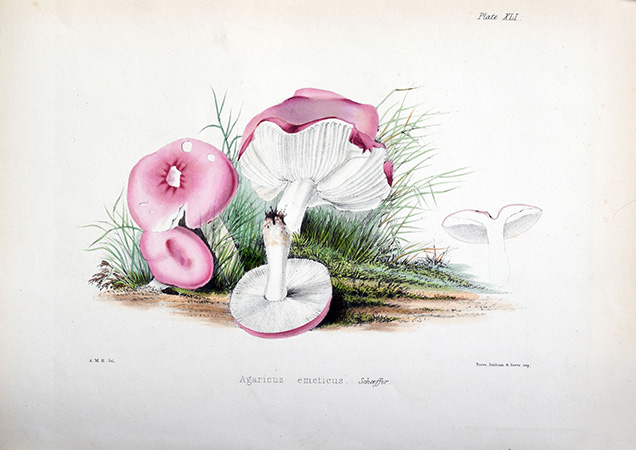
In the library’s McLean Wolf Rare Book Room you’ll find no shortage of works authored by men because, according to conventions of the time, they were best suited to explore the mysteries of the natural world. Some women, however, found ways bend expectations of womanhood to incorporate the study of the natural world into their lives. Many were born into families with the resources to provide them a formal education, of which drawing and appreciation for the natural world were a significant part. Some had access to scientific networks, who married or were related to male naturalists and were expected to support their work. Some were born into artisan families and incorporated their love for nature into their work. In the Academy’s Library and Archives, there are many examples of the important contributions of women.
Continue reading Illustrating the Importance of Women in Science on the Academy Blog.
Updated USDA Plant Hardiness Zone Map Spotlights Changing City

In the coming years, Philadelphia gardeners may try out some new plants and retire old favorites after an updated government map was released this fall. The USDA Plant Hardiness Zone Map gives gardeners a sense of which plants can grow in their region and which aren’t likely to make it through the winter. In this newest update, many Philadelphia residents have moved into a warmer half zone, reflecting changing environmental realities.
Natural history collections, like those at the Academy of Natural Sciences, help us understand these changes.
Continue reading Updated USDA Plant Hardiness Zone Map Spotlights Changing City on the Academy Blog.
Embrace Winter and Explore Philly’s Nature
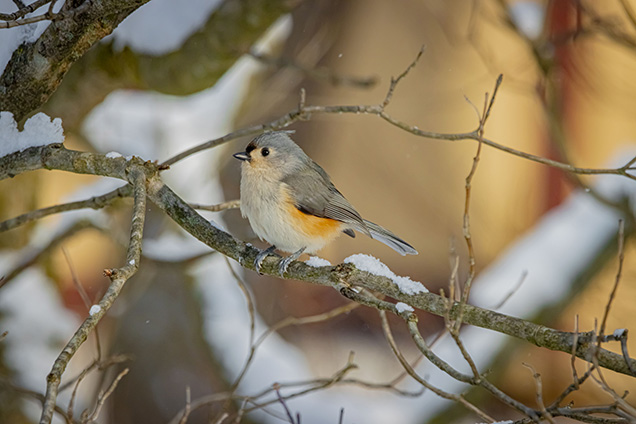
The snow and ice of winter can be enough to keep the boldest naturalist indoors and watching David Attenborough documentaries with a mug of hot chocolate in hand — but bundle up, because there’s still a lot to take in outside. Here are some ideas to get you started.
Continue reading Embrace Winter and Explore Philly’s Nature on the Academy Blog.
New Exhibit Gets Up Close and Personal with the Real Tiktaalik
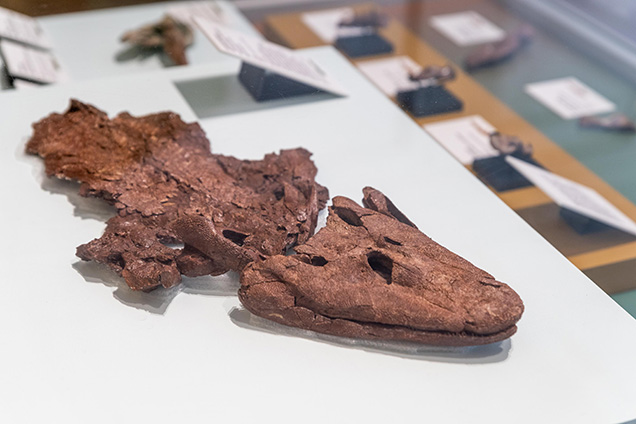
From science to pop culture and back again, Tiktaalik is a fish made truly famous.
Back in 2004, its discovery was hailed as one of the best-known examples of the evolutionary transition from limbed animals that swam to those that walked on land. Now, we all know this semi-smiling fishapod as the friendly fellow optimistically crawling up the riverbank, seen in many headlines, memes and cartoons that have spawned across the internet.
Continue reading New Exhibit Gets Up Close and Personal with the Real Tiktaalik on the Academy Blog.
Finding Latin American Inspirations in the Library & Archives
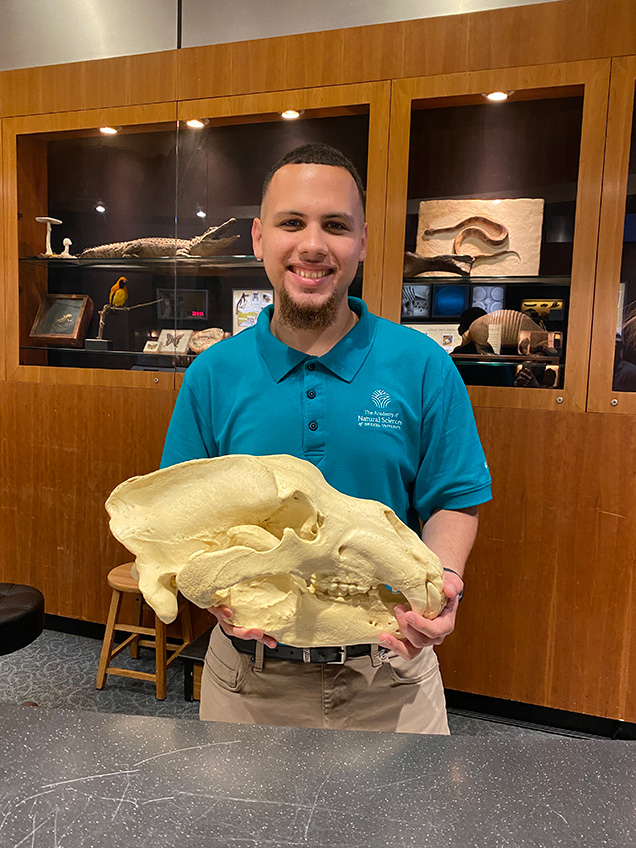
As the oldest natural history museum in North America, the Academy has a long and varied history. And even with the many well-known figures, works and stories found in our phenomenal Library & Archives, there are more that need to be researched, uncovered and revealed to help shape a brighter, more equitable future.
We reached out to Drexel student and recent Academy co-op Nathan Nazario to learn more.
Continue reading Finding Latin American Inspirations in the Library & Archives on the Academy Blog.
Create Your Own Pressed Botanical Specimen
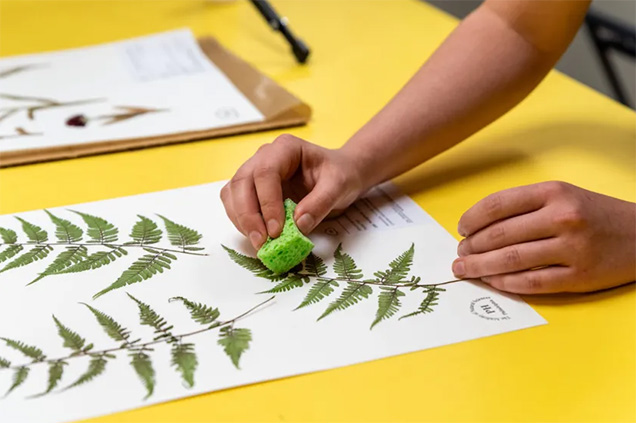
The Botany Department houses about 1.4 million specimens spanning more than 300 years of history. Specimens such as these are foundational to botanical research; they provide scientists insights into many fields of study, such as evolution, ecology and climate change. In this post, we’ll teach you how to make your own botanical specimen at home.
Click here to find out how to create your own pressed botanical specimen.
The Unexpected Diversity of Philadelphia’s Bees

While Philadelphia may not seem like an ideal habitat for wildlife, the city and county actually have a variety of green spaces, such as the John Heinz National Wildlife Refuge at Tinicum, the United States’ first urban wildlife refuge, to support plenty of different plant and animal species — including bees. But how many different kinds of bees call this city home? We reached out to Drexel University student and Academy co-op Liz Otruba to discuss what the bee population at the refuge really looks like.
Click here to continue reading The Unexpected Diversity of Philadelphia’s Bees on the Academy Blog.
Studying New Hawk Communities Through Genetics and Collection

Ornithologists carefully and strategically collect samples for the Academy’s collections from all over the world; work that often involves support from conservation organizations and even local community members. Every part of the specimen, big or small, will help tell the story of the bird’s species — its place in the family tree, their particular eating habits and hosted parasites, the health and ecology of their habitat and even changes in the region’s biodiversity over time.
We reached out to Therese Catanach, PhD, a postdoctoral researcher in Ornithology who primarily studies hawks and their parasitic lice, but also analyzes genetic data for other researchers studying birds, insects and viruses, to learn more about the importance of the collection for genetics and discoveries, especially for hawks.
Click here to continue reading Studying New Hawk Communities Through Genetics and Collection on the Academy Blog.
Highlighting Biodiversity: Freshwater Fishes in Equatorial Guinea

With dense canopies, soaring mountains and bubbling streams, Equatorial Guinea is composed of two wonderfully biodiversity-rich locations — the mainland Río Muni on the west coast of Central Africa and its islands, Bioko and Annobón. A long chain of volcanoes extends southwest from the mountains in continental Cameroon into the Gulf of Guinea, where it gives rise to the islands of Bioko, Príncipe, São Tomé and Annobón. Bioko is actually much closer to Cameroon than the continental part of Equatorial Guinea.
Bioko has tropical monsoon climate that provides plenty of freshwater to its many streams. These streams are home to two types of fishes: those that live along coastlines and commonly move upriver into freshwater (amphidromous fishes); and those that are restricted to freshwater (continental fishes).
Click here to continue reading Highlighting Biodiversity: Freshwater Fishes in Equatorial Guinea on the Academy Blog.
Highlighting Biodiversity: Searching for Snails in the Delaware River
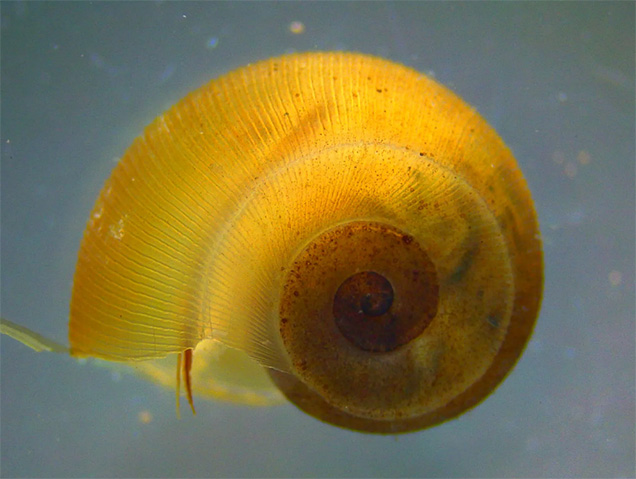
Free-flowing for nearly 300 miles across four states — New York, Pennsylvania, Delaware and New Jersey — the massive Delaware River is the lifeblood of the Northeast, providing not only drinking water for over 15 million people, but also critical freshwater habitat for countless aquatic and riparian wildlife species.
There are over 200 tributary streams and creeks comprising an estimated 14,057 miles of sheer waterway in the Delaware River watershed. Each one of these creeks and streams is connected to the river and nearby land, both through their shared waters as well as with their shared ecosystems. Human actions in one creek can impact another stream; native and invasive species can be carried upstream or down. In other words, the health of the whole system is reliant on the care and understanding of its many parts and players.
As the watershed lands surrounding this river are still about half forested (with 18% agricultural and 14% developed), benchmarking the diversity found here is crucial to creating a holistic picture of the health of this most important waterway — for the present and for the future.
Click here to continue reading Highlighting Biodiversity: Searching for Snails in the Delaware River on the Academy Blog.
Highlighting Biodiversity: Familiar Flora in Newfoundland and Labrador
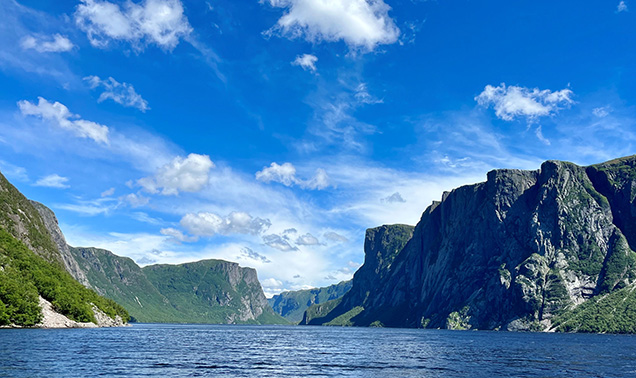
A botanist, a paleontologist, an architect and a retired lawyer planned a science trip to Newfoundland and Labrador. Armed with guidebooks, local floras and “The Shipping News,” the Pulitzer-prize winning novel by E. Annie Proulx, the trip’s botanist and the Academy’s Collection Manager for Botany, Chelsea Smith, PhD, was looking forward to investigating the plants of this Canadian province, as well as escaping the heat of July in Philadelphia.
What she found were the kindest people she’d ever met, surprisingly familiar plant species and — strangely — no moose.
Click here to continue reading Highlighting Biodiversity: Familiar Flora in Newfoundland and Labrador on the Academy Blog.
There Is a Fungus Among Us! Killer Fungi in the Flesh at the Academy
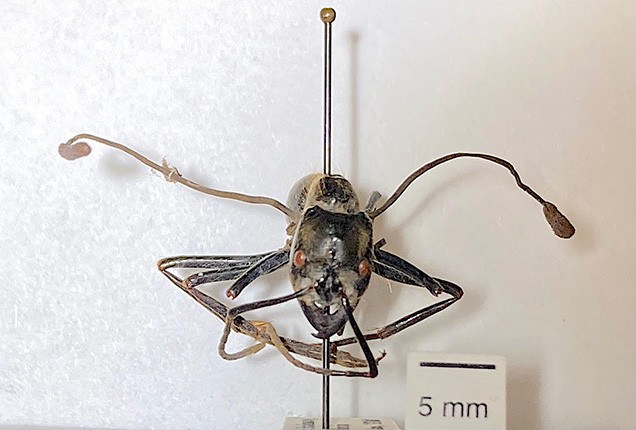
Deep in the recesses of the Academy lurk the specimens of a very particular, silent foe — for insects, that is. Cordyceps and Ophiocordyceps are members of a group of parasitic fungi with otherworldly growth traits that have long been the inspiration for science fiction, now popularized across the nation.
This type of fungus is ubiquitous; it is found all over the world, usually in the forest understories of warm tropical climates. There are thousands of different species of entomopathogenic fungi — species that attack living insects as their hosts. They float around in their spore stage, and most have generally evolved alongside the insects that are available within their environment, creating hosts out of ants, caterpillars and many unsuspecting others.
Click here to continue reading There Is a Fungus Among Us! Killer Fungi in the Flesh at the Academy on the Academy Blog.
Now That’s Funky! Recent Fossil Discovery Honors Academy Scientist
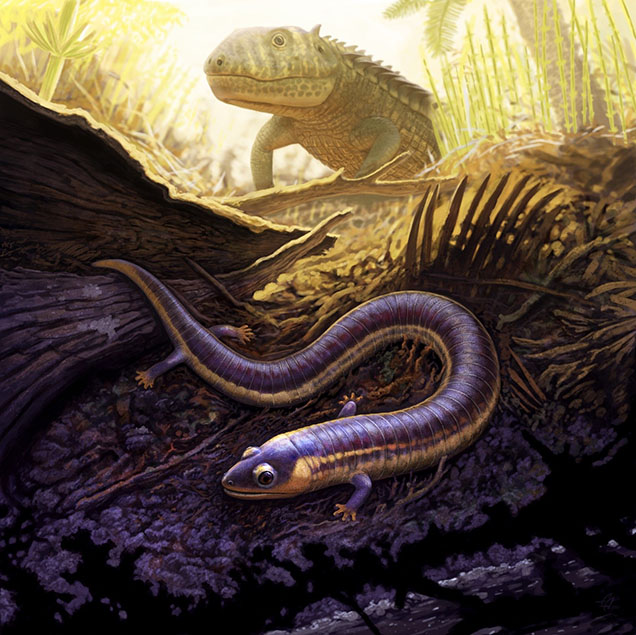
Artistic reconstruction of Funcusvermis gilmorei (foreground) and the crocodile relative Acaenasuchus geoffreyi (background) in the tropical forest of Petrified Forest National Park about 220 million years ago. Artwork by Andrey Atuchin; Credit: the National Park Service and the Petrified Forest Museum Association
A recently published groundbreaking caecilian fossil discovery made by Ben Kligman, Virginia Tech PhD candidate, and his phenomenal colleagues not only graced the cover of Nature journal this month, but also honored one of the Academy’s very own scientists.
We reached out to the lead author to learn more!
Continue reading Now That’s Funky! Recent Fossil Discovery Honors Academy Scientist on the Academy Blog.
Highlighting Biodiversity: Finding Frogs in the New Jersey Pine Barrens

Ron Smith, an instructor with Drexel University’s Department of Biodiversity, Earth and Environmental Science, and his group of volunteer community scientists were lured deep in into the swampy thicket of Wharton State Forest in the New Jersey Pine Barrens on the search for biological treasure.
Their first clue was the sound of nasal quonking. They tied a yellow bandana high up on a tree branch to mark the location of where they would leave the trail and enter the dense vegetation toward a pond they could not yet see. Stealth was not their style; the noise of a few large human mammals negotiating the undergrowth of inkberry and sweet pepperbush was enough to quiet every creature in the wet woods. And the increasing presence of sphagnum moss on the forest floor had every footfall puddle water around their feet as they squished forward.
Continue reading Highlighting Biodiversity: Finding Frogs in the New Jersey Pine Barrens on the Academy Blog.
Highlighting Biodiversity: Spectacular Birds and the Amazon River
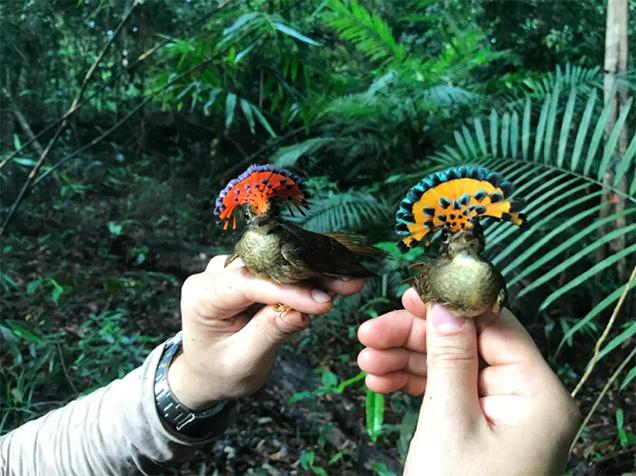
Amazon Royal Flycatchers (Onychorhynchus coronata) are a common species that occur across the Amazon Rainforest. When alarmed they display a large red (males) or orange (females) crest like the ones seen here. Lukas Musher/ANS
Few places are as evocative of biodiversity as the Amazon Rainforest, a region of South America that occupies just 0.5% of Earth’s terrestrial area yet harbors a disproportionately astounding 10% of known species diversity. Roughly 1,300 bird species call the Amazon Rainforest their home, as do more than 3,000 species of fishes and countless primates, butterflies, orchids, frogs and more.
In some locations, the Amazon Rainforest is one of the last remaining truly wild places, with only minimal signs of the industrialized world — though this is rapidly changing. How the Amazon accumulated this impressive list of organisms remains one of the great mysteries of modern biology, one that continues to be debated by scientists who work across many disciplines.
The region also has a major impact on the rest of the planet. By some estimates, the Amazon Rainforest contains as many as 13% of all the individual trees on the planet — making it one of Earth’s most crucial carbon sinks. Its vegetation stores a mind-boggling 120 billion metric tons of carbon in its stems, leaves, trunks and branches — a reduction, however, from what it has historically stored — but still a truly impressive number. Moreover, studies have shown that the Amazon Rainforest creates its own climate, which can then affect those of other regions as far away as the North American Pacific Northwest.
Continue reading Highlighting Biodiversity: Spectacular Birds and the Amazon River on the Academy Blog.
A Day in the Life at the Academy’s Ornithology Department

We love learning more about the daily tasks and perspectives of the students, scientists and staff that work within the walls of the Academy. So, we reached out to Drexel’s Biodiversity, Earth and Environmental Science (BEES) student co-op Abigail Del Grosso to learn more about her wonder-filled work here in Ornithology.
Continue reading A Day in the Life at the Academy’s Ornithology Department on the Academy Blog.
Leave the Leaves for Understory Habitats
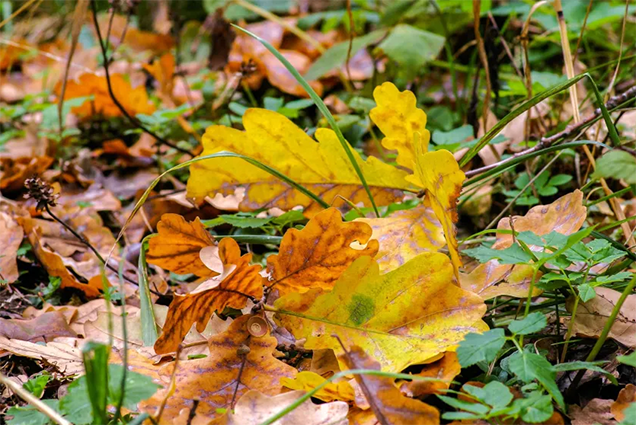
Red, orange, yellow, gold, brown – every autumn, the canopies of the Northeast transform into a picturesque glory of color. Once they fall though, our opinions of these very same leaves may quickly change. Are they yard waste, an annoying nuisance to be cleaned up or something quite different and much more important?
Leaves are actually critically important to the health of your yard. The simplest thing you can do to help support sustainable natural ecosystems in your area is to leave the fallen leaves on the ground during autumn.
Continue reading Leave the Leaves for Understory Habitats on the Academy Blog.
Orchids: The Royal Family of Plants

Orchids are one of the most well-documented flowering plants in history. The earliest recorded European attempt at growing orchids was when Dutch botanist Paul Herma began documenting his cultivation of a North American orchid in 1698. While his attempt was not successful, it opened the door for many European botanists to try their hand at natural and artificial orchid reproduction.
The first successful artificial orchid reproduction occurred in 1856 with the Calanthe Dominyi. The Calanthe genus has since welcomed many additions to the group such as Calanthe Triplicata and Calanthe Sylvatica. These orchids are best known for being a winter sprouting flower with deep roots.
Continue reading Orchids: The Royal Family of Plants on the Academy Blog.
Confronting the Effects of Coastal Climate Change
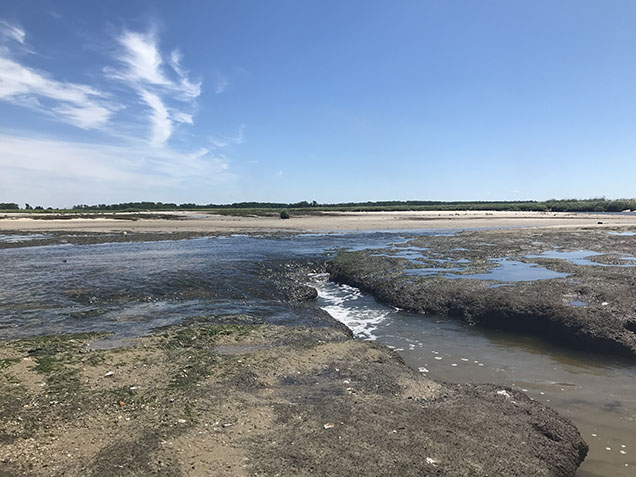
Environmental science major Kris Freyland sees the effects of climate change up close. Throughout their co-op this spring and summer, Freyland worked with Beth Watson, PhD, associate professor of biodiversity, earth and environmental science and senior scientist at the Academy of Natural Sciences’ Patrick Center for Environmental Research, to study the impact of saltwater intrusion into coastal forests.
“The forest is dying off, giving rise to ghost forests, and salinity and soil flooding is leading to more bare ground, wetlands or open water,” Watson explained. Ecohydrology, the study of the interactions between water and ecosystems, allows the research team to analyze the way the landscape has changed and predict how it might continue to erode in the future.
Continue reading Confronting the Effects of Coastal Climate Change on the Academy Blog.
Bird Migrations: Timeless and Threatened

Purple martin, Progne subis © Doug Wechsler/VIREO
Across the setting sun, migrating birds fly high in the sky toward a distant destination. It’s an iconic image we’re all familiar with, heralding the arrival of autumn. Many well-known species of birds migrate night and day between August and November, including hawks, geese, thrushes, warblers and sparrows. As these birds journey through the darkness, however, they often face unexpected, dangerous and unseen challenges — distracting bright lights, invisible glass windows and human-made buildings.
Click here to continue reading Bird Migrations: Timeless and Threatened on the Academy Blog.
Community Science to the Rescue, One Flipped Horseshoe Crab at a Time

On a beautiful sunny day in early summer, a group of community scientists led by Ron Smith — a Drexel University BEES instructor and high school environmental science teacher — was making the most of the beachy breeze on the Delaware Bay. Fixing their hats and covering themselves in sunscreen and bug spray, these volunteers were setting off to do some very important conservation work: rescuing horseshoe crabs.
Click here to continue reading Community Science to the Rescue, One Flipped Horseshoe Crab at a Time on the Academy Blog.
Trapping Lanternflies with Innovation

Drexel’s Biodiversity, Earth and Environmental Science (BEES) alumna Emma McKee researched the best way to trap spotted lanternflies and came up with a modification for circle traps that allows an exit strategy for other smaller, beneficial insects.
Click here to learn about McKee's innovative trap and how you can build your own.
The Future Ghost Forests of New Jersey
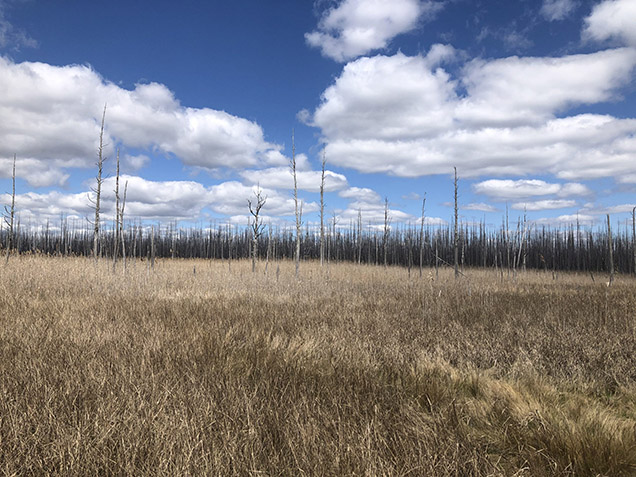
Jakes Landing is a centuries-old access point to Dennis Creek in Cape May, New Jersey, where the forest landscape abruptly drops into a tidal saltwater marsh. Close to the marsh, row after row of dead Atlantic white cedars jut out of the ground like spikes. Just beyond those are swaths of statuesque loblolly pines.
The forest is healthy now, but these trees are in danger. Most trees in the Delaware Estuary region that stand close to salt marshes are at risk of death due to sea-level rise.
Click here to read The Future Ghost Forests of New Jersey on the Academy Blog.
Coyote and Fox Populations on the Rise?
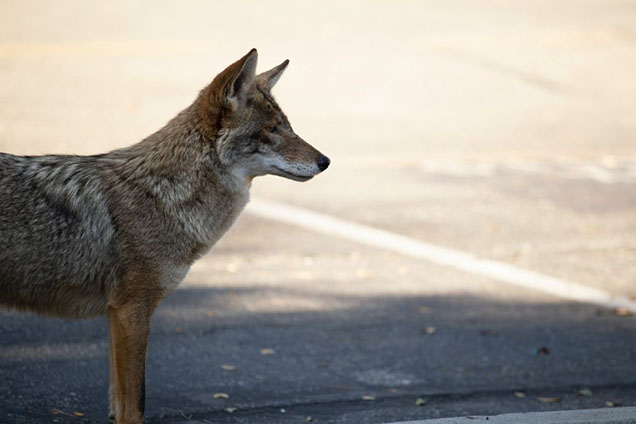
You may have noticed a common theme at the dinner table: Grandpa has spotted the fox in the yard again or perhaps your aunt has heard of a coyote in the local nature preserve. These discussions usually lead to a general wonder of whether wild canine populations are on the rise, if they are a positive or negative influence on the local environment and what their presence might mean for the neighborhood.
The Academy wanted to know these answers, too. So, we reached out to Dane Ward, PhD, assistant teaching professor in Drexel’s Biodiversity, Earth and Environmental Science (BEES) department who specializes in urban wildlife ecology, to learn more.
Click here to read Coyote and Fox Populations on the Rise? on the Academy Blog.
Floodplains and Redlines

Three of Drexel University’s Department of Biodiversity, Earth and Environmental Science (BEES) students wanted to make an environmental justice impact right in here in Philadelphia. So, they set out to better understand how historical housing policies and flood hazard zones have unequally effected various communities within our city. The Academy reached out to learn more.
Click here to read Floodplains and Redlines, our Q & A with BEES students Erin Wright, Ivy Steinberg-McElroy, and Sally Harpster.

Plastic-free Philly, Philly’s solution to plastic pollution, is a volunteer effort aimed at reducing single-use plastic water bottles and replacing them with environmentally healthier options, such as drinking tap water and using refillable bottles. By eliminating plastic water bottles, you help keep our waterways clean and beautiful, preserving the health of our environment and our communities for future generations.
The Academy of Natural Sciences of Drexel University launched Plastic-free Philly in 2022 — our Water Year — to raise awareness of plastic pollution and clean water. The institution conducts actionable water science that seeks to illuminate the interactions between humans and the environment, especially in aquatic systems. The Academy is a science leader for the Delaware River Watershed Initiative, which protects and restores the rivers and streams that supply drinking water to 15 million people.
Click here to learn more about Plastic Free Philly.
The Name’s Bondi, Synodus bondi

Scientists at the Academy have a long history of contributing specimens not only to the collections of their primary field of study, but also to other collections throughout the museum. For example, Edward Drinker Cope is best known for his contributions to paleontology, but he was also an early driving force behind the creation of the Academy’s Ichthyology and Herpetology collections.
It remains common today for our researchers to bring back specimens from collecting expeditions for their colleagues in other departments. They may collect some mollusks while gathering fish or pick up some interesting specimens for sale in a market. Every so often their efforts may be rewarded with a new species named in their honor.
This is what happened in 1939 when Ichthyology Curator Henry Weed Fowler described a new species of lizardfish from Jamaica and named it Synodus bondi. The specimens used in the description were collected by an ornithologist from the Academy by the name of James Bond, a name made famous by Ian Flemming when he borrowed the moniker for his spy novels.
Read more on the Academy Blog.
Reading the Leaves

The veins in a leaf do more than store water for the plant; even plant leaves preserved as fossils. They can reveal what environmental conditions were like when and where the plant was growing.
Leaf veins are a passion for Zack Quirk, a National Science Foundation fellow and University of Michigan paleobotany PhD candidate, who’s been using the Academy’s Botany Collection to measure the length of veins in plants. He chose the Academy herbarium because of it wide range of specimens collected from around the world. To collect these plants on his own would be prohibitively expensive and time-consuming.
Click here to continue reading Reading the Leaves on the Academy Blog.
A Real Shocking Discovery
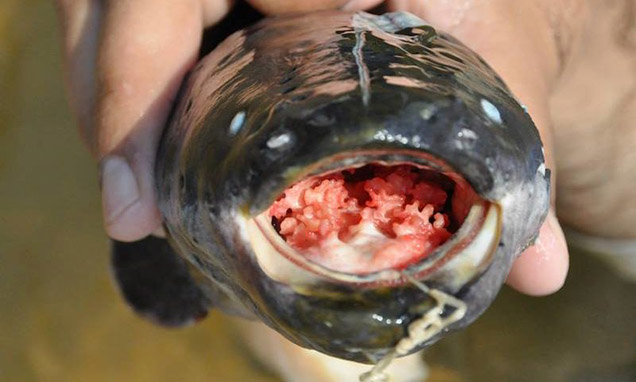
Academy Ichthyologist Mark Sabaj is one of the co-authors on the descriptions of two new species of electric eel.
Scientists have discovered a new species of eel that can discharge up to 860 volts of electricity – significantly more than the 650 volts previously recorded by what had been believed to be the only type of eel in existence… until now.
Mark Sabaj, PhD, interim curator of fishes at the Academy of Natural Sciences of Drexel University is well-versed in techniques for catching electric eels both with and without getting shocked. He contributed to a large study of electric eels as a member of a multinational team led by Carlos David de Santana, an ichthyologist at the National Museum of Natural History in Washington, D.C. Sabaj is a co-author on the descriptions of two new species, Electrophorus voltai and Electrophorus varii, published in Nature Communications.
Click here to read the full Q & A with Mark Sabaj on the Academy Blog.
Color Our Collections
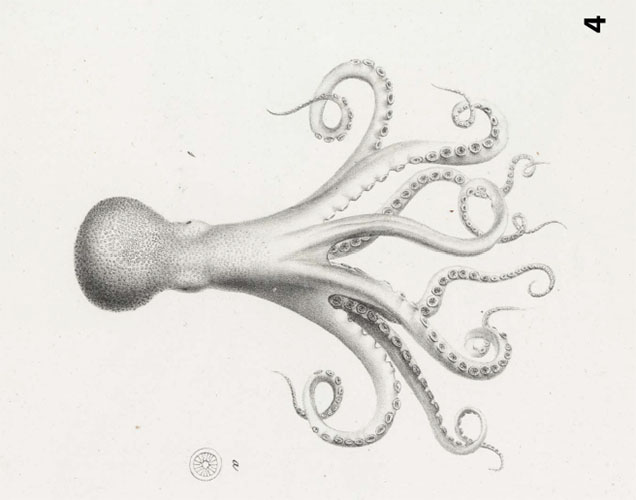
Coloring can have many benefits for people of all ages. It can help enhance motor skills and vision, reduce stress and anxiety and improve focus.
Click here to download a PDF coloring book made of images from the Academy's Library and Archives.
Four Ways to Cut Your Carbon

Looking to reduce your personal carbon emissions? There are some big steps you can take. For example, if you need to travel a long distance, you can choose rail or even sailboat — to follow in Greta Thunberg’s wake — rather than flying. The 16-year-old Swedish climate activist last week completed a transatlantic journey by racing yacht to attend the United Nations summit meeting on global warming this month. Few of us fly every day, and fewer sail. So how can we do our part to reduce CO2 emissions (which contribute to harmful greenhouse gases largely blamed for driving global warming) in our daily life?
Click here for four ways you can reduce your carbon.
A Relic of Botany History
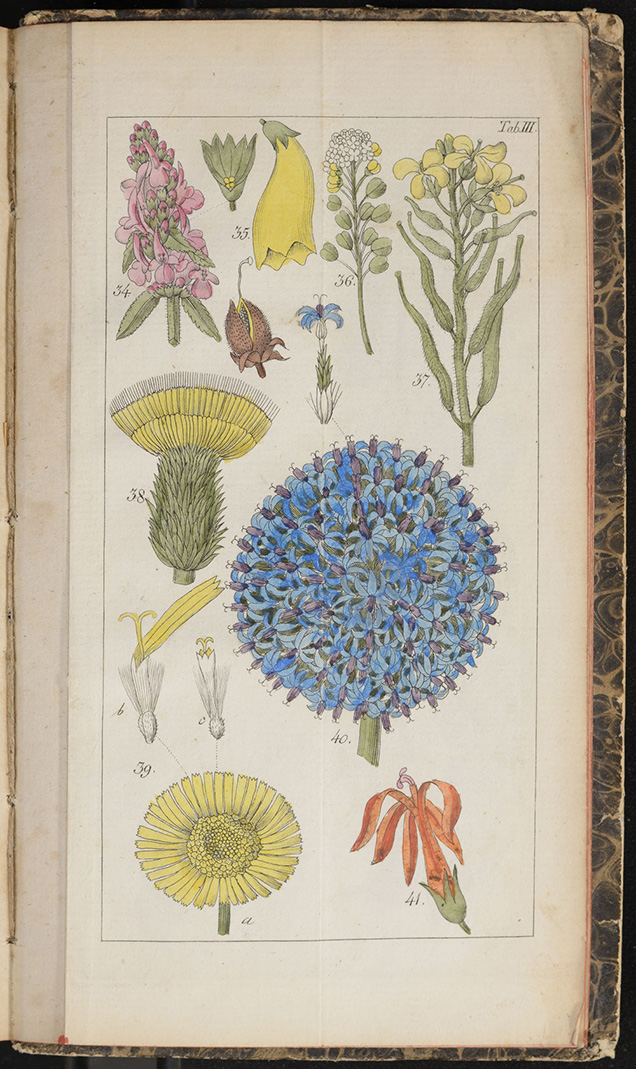
Dr. Carl Ludwig Willdenow’s Anleitung zum Selbststudium der Botanik: ein Handbuch zu öffentlichen Vorlesungen (Dr. Carl Ludwig Willdenow’s Guide to Self-Study of Botany: A Handbook for Public Lectures) has been added to the Academy's library. Willdenow is a major figure in the field of botany. The book was not previously contained in our vast collection and contains several brilliantly colored plates.
Learn more about the title's addition to the Academy: https://www.anspblog.org/a-relic-of-botany-history/
Time Outdoors: It’s Healthy
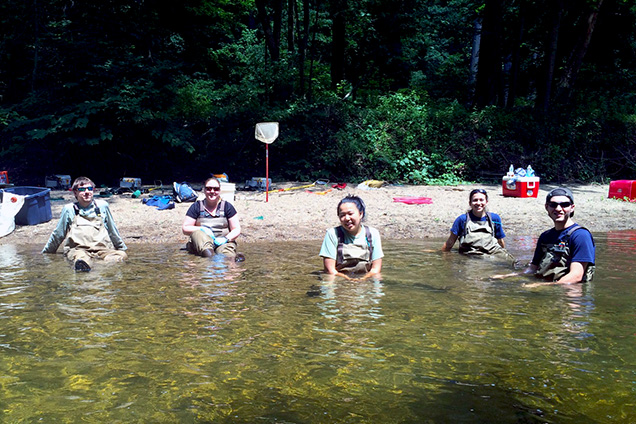
Doctors and psychologists have long recognized that spending time in nature leads to a healthier well-being, and a growing field of research aims to better understand and quantify the benefits of spending time in nature. Time spent outdoors is related to lower stress levels, decreased blood pressure, and a reduced risk of chronic diseases such as asthma, allergies, diabetes and cardiovascular disease.
So, if the prescription is to spend more time in nature, what’s the dosage? A recent The New York Times article highlights some new findings, namely that researchers have zeroed in on the ideal amount of outdoor time for reaping nature’s maximum health benefits: 120 minutes per week. Two hours in a week doesn’t seem like a lot of time, but it can sometimes be difficult to fit that time into our already hectic schedules.
Click here for some easy suggestions for adding 120 minutes of outdoor time to your week.
Where Does Your Water Come From?
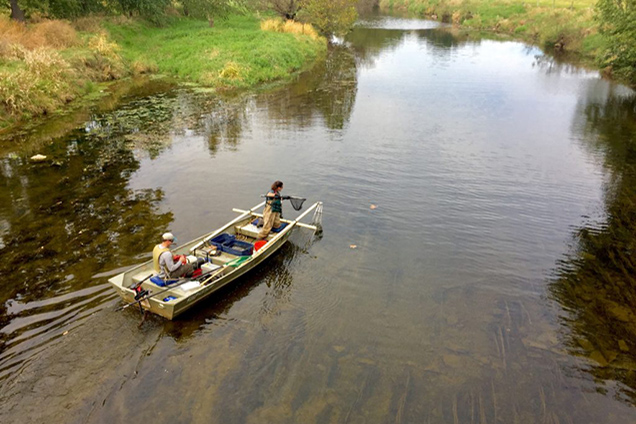
The Wissahickon Creek watershed is 64 square miles and covers portions of Montgomery and Philadelphia counties in Pennsylvania. The Wissahickon is a small but important part of a larger system. It is a tributary of the Schuylkill River, which in turn is the largest tributary of the Delaware River. The whole Delaware River Basin covers 13,500 square miles and provides water for more than 15 million people, including half of New York City’s potable water supply. Do you know the source of your drinking water?
Read more: https://www.anspblog.org/where-does-your-drinking-water-come-from/
Five Things You Can Do Now to Help the Environment

Did you know that a recycling shipment with as little as 0.5% non-recyclables can be considered unusable and trashed? Are you aware that livestock is a major source of greenhouse gasses and that eating less could reduce your environmental impact? Have you tried adjusting your thermostat one degree to save 10% on your energy use? Learn five things you can do to reduce your footprint on our earth.
Read more: https://www.anspblog.org/what-are-5-things-you-do-to-help-the-environment-in-under-10-minutes/
Support Science
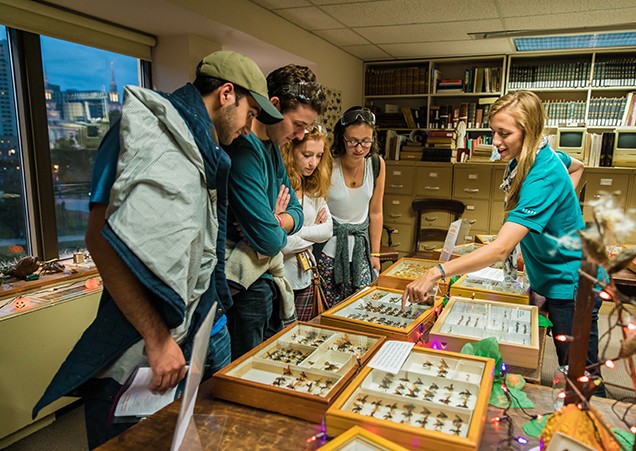
Make a difference today with your gift to the Academy’s Annual Fund. The Annual Fund provides vital support for the Academy’s most critical needs, including research, collections care, education and exhibits. Your support of the Annual Fund will protect the Academy’s irreplaceable collections, including the Lewis and Clark Expedition’s botany collection and John James Audubon’s birds; support world-class research addressing today’s most significant questions in environmental science, biodiversity and evolution; help support science education for more than 80,000 schoolchildren each year; and fund outstanding exhibitions, educational programs and environmental forums for learners of all ages.
I Support Science: https://ansp.org/get-involved/support/annual-fund/